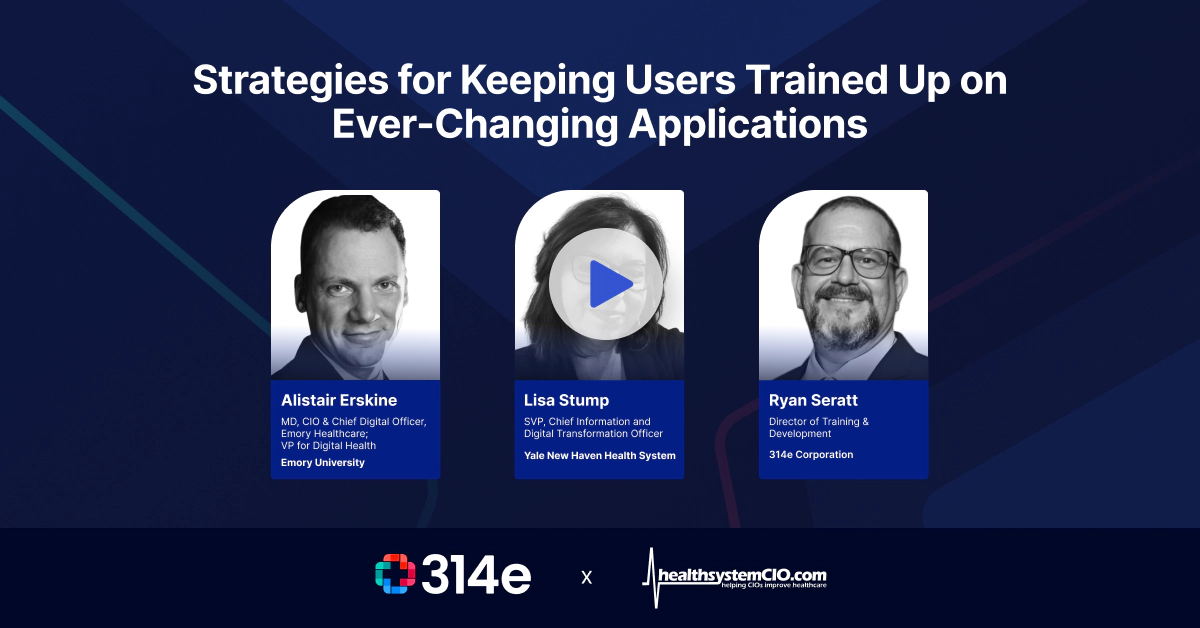In this webinar, the speakers discuss the various strategies that help in grappling with the challenges of ever-changing healthcare applications. Some of the key questions answered during the webinar are:
- Which organization leader ensures that users receive proper training to navigate the applications they need to do their jobs?
- What are some best practices for keeping users trained on key applications?
- How do you ensure vendor upgrades are worth the effort to train users on the changes?
- How to handle upgrades that require workflow changes differently than those that do not?
- How to handle resistance to training?
- How do you know what level of proficiency a user has attained following education and training?

Speaker 1: Alistair Erskine
MD, CIO & Chief Digital Officer, Emory Healthcare; VP for Digital Health, Emory University
With a strong background in Internal Medicine and Pediatrics, as well as Clinical Informatics, Alistair is responsible for the seamless integration of Technology, Data, and Informatics to optimize patient experience and clinician workflow using health IT software.

Speaker 2: Lisa Stump
SVP, Chief Information and Digital Transformation Officer, Yale New Haven Health System
Lisa is a dynamic leader with over 25 years of experience in Clinical, Operational, and Information Technology roles. With a focus on collaboration, creativity, and strategic thinking, she is always looking for new ways to drive progress and achieve better outcomes for patients and healthcare providers alike.

Speaker 3: Ryan Seratt
Director - Training & Development at 314e Corporation
Currently holding the position of the Director of Training and Development at 314e Corporation, Ryan’s 20 years of work experience include working as the Learning and Development Consultant at Real World Learning LLC, Director of Training and Development at SCL Health, Lead Sales Development Instructional Designer at MoneyGram International, to name a few.

Speaker 4: Anthony Guerra
Founder & Editor-in-Chief at healthsystemCIO
Anthony is the founder and editor-in-chief of healthsystemCIO, a publication dedicated to serving the information needs of healthcare CIOs.
